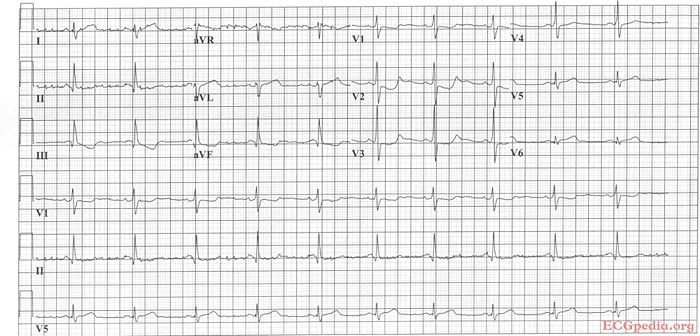MI 5: Difference between revisions
Jump to navigation
Jump to search
m New page: Culprit lesion: '''RCX''' # sinus rhythm # about 60/min # normal conduction # intermediate axis # normal p wave morphology # No pathologic Q or LVH. Tall R in V2, V3. # ST depression in V... |
mNo edit summary |
||
| (One intermediate revision by the same user not shown) | |||
| Line 1: | Line 1: | ||
{{Case| | |||
|previouspage= MI 4 | |||
|previousname= MI 4 | |||
|nextpage=MI 6 | |||
|nextname=MI 6 | |||
}} | |||
'''Where is this myocardial infarction located?''' | |||
[[Image:ami0005.jpg|700px|thumb|left|ECG MI 5]] | |||
{{clr}} | |||
[[Answer MI 5|Answer]] | |||
